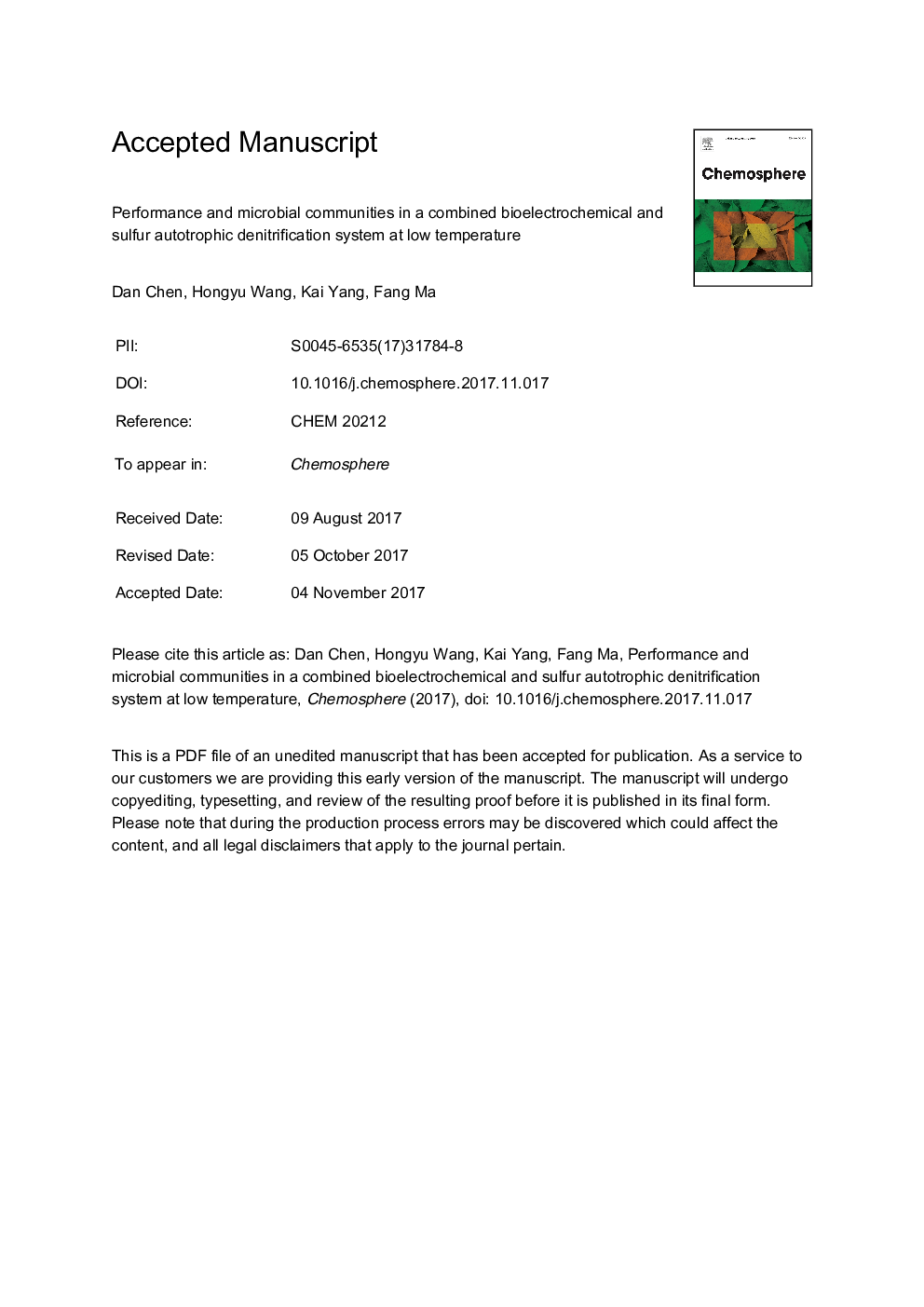| Article ID | Journal | Published Year | Pages | File Type |
|---|---|---|---|---|
| 8852735 | Chemosphere | 2018 | 27 Pages |
Abstract
Combined bioelectrochemical and sulfur autotrophic denitrification (CBSAD) system had proven to be feasible for nitrate removal at low temperature. This system obtained excellent denitrification efficiency 96.55% at 10 ± 2 °C long term operation. Nitrate removal efficiency presented increased tendency with applied current increased from 50 to 200 mA and then decreased when the applied current was further increased to 300 mA. The CBSAD system owned the most abundant and rich communities at current 200 mA, and the community structures of the microbial samples at different current conditions were clearly different from each other. Phyla Firmicutes, Proteobacteria and classes Epsilonproteobacteria, Gammaproteobacteria, Betaproteobacteria, Clostridia dominated in all the communities in the system. The largest genus at current 50 mA was Arcobacter, whereas Pseudomonas was the most dominant genus at current 100-300 mA condition, suggesting that high current changed the bacterial structure in this CBSAD reactor.
Related Topics
Life Sciences
Environmental Science
Environmental Chemistry
Authors
Dan Chen, Hongyu Wang, Kai Yang, Fang Ma,
